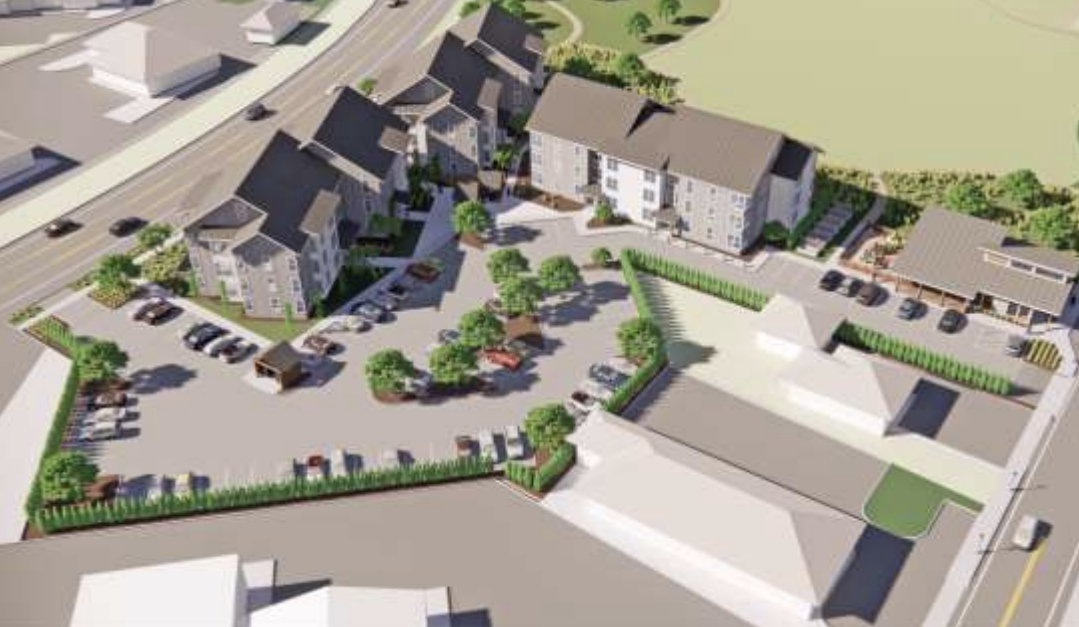Range damage is blow to archers
Published 4:00 pm Tuesday, January 22, 2008
Over the past 12 years, archers of all walks have gathered at the Saddle Mountain Archery Range to take aim at game-like targets along a mile of tree-lined trails in the Clatsop State Forest.
Then the December storm hit.
Now, what was once a canopied haven for hunters south of Walluski Loop is a wasteland of blown-down timber in the middle of Clatsop County’s most widespread tree damage. High winds Dec. 2-3 either uprooted or broke the tops off nearly all the trees on the northern half of the range.
“This used to be a big, beautiful forest,” said Jim Bergeron, a founding member of the Saddle Mountain Archers club. “Now there aren’t a dozen trees left standing.”
Bergeron was the first club member to arrive on the scene after the big storm hit.
“When I walked through here I didn’t even know where I was, it was so different,” he said. “I went around the course, and what ordinarily takes 10 minutes took me an hour. I came to the conclusion there was no way we could clear it up – even with chain saws – because we’d have to cut so many trees.”
Somewhere in the rubble are 50 game-shaped targets and four riggings that moved some targets through the trees like real animals. The Saddle Mountain Archers have organized annual shooting events, barbecues and camp-outs at the site since establishing the range after a lengthy land-use battle in 1996. The club holds regular trash clean-ups in the state forest to pay for the space.
Though the southern trail may retain some greenery, it’s hard to say when the range will ever be back to normal.
“Before, you had the feeling of being in a forest,” said Bergeron. “Now you can see all the way to the Walluski River.”
While club members wait for salvage logging operations to clear the range, they’ve arranged to join forces with Pacific County’s Bear River Archers, who maintain their own practice range across the Columbia River near Long Beach, Wash.
Practice makes perfectBefore the storm ripped through the Saddle Mountain practice range, archers would advance through a gamut of burlap-covered targets nestled in the woods to test their shooting skills at various distances.
Dozens of hefty cedar-bale targets were lugged into the forest with much effort by the Saddle Mountain Archers, a group of about 35 enthusiasts that has seen as many as 60 members in the past.
“This is our area where we used to set up,” said Bergeron, stepping over a fallen treetop at the entrance to the range and gesturing toward a pile of 100-foot-long trunks. “There used to be a trail here, but now you can’t even see it.”
Bergeron, who crafted bags out of trawl fishing nets to place on top of the targets for easy arrow removal, said the range was set up to challenge even the more experienced archers. After his gymnastic hike through the storm-ravaged range, he said he believes about three-quarters of the targets might have survived.
“That’s where our targets are,” he said pointing out into the devastated forest, “under those trees.”
Several times each year, the club added animal-shaped foam targets to the range and invited archers from across the state to join in fund-raising “3-D” shoots, which were often attended by hundreds of people. The funds covered the cost of replacing exhausted targets.
“The whole purpose of the 3-D shoots is to teach people to take correct shots, to be ethical and to get you warmed up before hunting season,” said club president Kent Hawkins.
The archers lined up to shoot at replicas of bears, turkeys, raccoons – and even an armadillo – as well as deer and elk.
Bergeron said the target practice helps archers adjust quickly to real-life situations when they’re in the field.
“It’s just like hunting, you have to come in and judge range,” he said. “One of the most critical things a hunter can do is judge distance accurately.”
Caught in a wind tunnelThe Saddle Mountain range lies in the middle of a large swath of Clatsop County land that got pummeled by the Dec. 2-3 winds, said Tom Savage, Astoria District Forester for the Oregon Department of Forestry.
“It’s in that pathway of some of those tracts that the wind hit really hard,” he said. “That’s the same tract that wiped out the county trees behind the state forestry office, through Williamsport Road and up to the Astoria Column.”
Foresters are still assessing the volume of blow-down from the storm, but Savage said the downed wood in Walluski Loop tract, which envelopes the archery range, and the Saddle Mountain basin south of Astoria will be the first areas his department will look to salvage.
Most of the trees in the Walluski Loop tract were 70 year-old hemlock that once stood about 120 feet tall, said Savage.
Though that section of the state forest had been thinned a couple years before last month’s storm, Savage said the harvest probably wasn’t to blame for the extensive blow-down. The severity of the wind caused widespread damage across multiple stands of various ages, including 15-year-old state forest plantings, 80-year-old county-owned stands along Williamsport Road and 50- to 100-year-old trees owned by the city of Astoria.
The stand around the archery range had also experienced some blow-down after the 2006 windstorm, but state foresters decided there was enough timber left that “we still had a viable stand,” said Savage.
“It had been thinned out from commercial thinning and blow-down,” he said, “but this one here really finished it off.”
With so few trees left standing, the state will probably do what is called a “regeneration harvest” on the property, clearing most of the timber and replanting.





